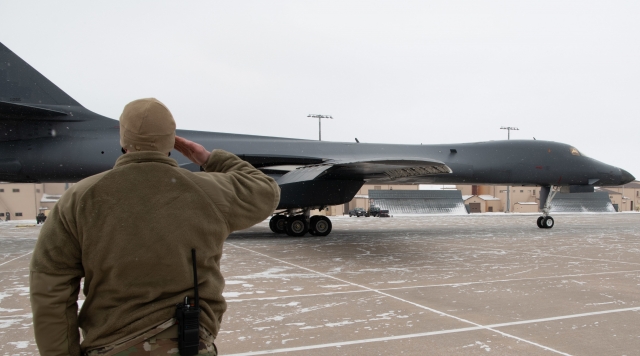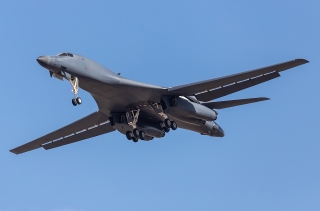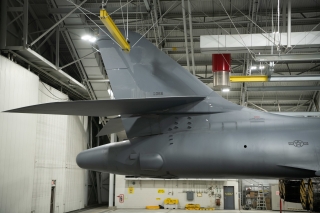 First of seventeen B-1s retired
First of seventeen B-1s retired
The first of seventeen B-1B Lancers, to be retired in fiscal year 2021 under a Congressionally-approved divestiture plan, flew to the 309th Aerospace Maintenance and Regeneration Group (AMARG), or "the Boneyard”, at Davis-Monthan AFB (AZ) on 17 February 2021.
The B-1B was based at Ellsworth AFB (SD), but the US Air Force did not provide specifics on which aircraft retired. Strikingly, on their own pictures, that were taken prior departure, serial 85-0066 was seen. Its "EL"-tailcode as well as its nickname "No Antidote II" were already removed.
The retirement of the seventeen aircraft will not affect the USAF's lethality or any associated maintenance manpower as AFGSC said in a press release. It will allow a focus of maintenance and “depot-level manpower on the remaining aircraft, increasing readiness and paving the way for the bomber fleet modernization.
Not all seventeen Lancers will go to the 309th AMARG once they retire. One will go to Edwards AFB (CA) for testing. It is not revealed if this Lancer will be added to the 6512th Test Wing for air or static ground tests. Another will go to the Oklahoma City Air Logistics Complex at Tinker AFB (OK) and a third one will find its way to Wichita State University (KS) for research. A fourth B-1B will become a gate guard at an unrevealed location. Both Ellsworth and Dyess already have one at the gate, so this one will most probably go to another lucky base.
 Of the thirteen 309th AMARG aircraft, four will be kept in “Type 2000 recallable storage” which means the aircraft will get a so-called Spraylat treatment to keep out moisture and animals, and the engines will be cocooned to preserve the “functional and material integrity” of the airplanes. These four could be resureected in the future. AFGSC could not say how long this quartet is kept in this status. The remaining B-1s going to the Boneyard will be sadly eligible for parts cannibalization.
Of the thirteen 309th AMARG aircraft, four will be kept in “Type 2000 recallable storage” which means the aircraft will get a so-called Spraylat treatment to keep out moisture and animals, and the engines will be cocooned to preserve the “functional and material integrity” of the airplanes. These four could be resureected in the future. AFGSC could not say how long this quartet is kept in this status. The remaining B-1s going to the Boneyard will be sadly eligible for parts cannibalization.
After the retirment of the seventeen strategic bombers, 45 airplanes will be left in the operational B-1B fleet, about evenly divided between the 28th Bombardment Wing at Ellsworth (34th and 37th Bombardment Squadrons, both "EL"-coded) and the 7th BW at Dyess AFB (TX). The latter commands the 9th, 28th BS, both coded "DY".
AirForce Mag reported that the B-1B retirements will make way for the new B-21 Raider, and are “something we have been working toward for some time,” as AFGSC Commander Gen. Timothy M. Ray said in a press release. The USAF “accelerated” the retirements because excessive wear and tear on the aircraft during the last two decades “would cost tens of millions of dollars per aircraft” to fix, “and that’s just the problems we know about,” Ray said.
 An AFGSC spokesman said the actual estimate is, “USD 10 million to USD 30 million per aircraft to get back to a status quo fleet in the short term until the B-21 comes online.”
An AFGSC spokesman said the actual estimate is, “USD 10 million to USD 30 million per aircraft to get back to a status quo fleet in the short term until the B-21 comes online.”
The USAF is conducting a long-term structural fatigue test on a B-1B (serial 85-0082/ED) carcass and wing at Boeing’s facilities near Seattle (WA). The tests will help engineers anticipate structural problems on the remaining fleet that will need to be addressed.
The retirement of the above seventeen aircraft should be completed by 30 September 2021.
Of note, the 309th already has seventeen B-1Bs in storage, so later this year 31 Lancers can be found at the Boneyard. The following seventeen were confirmed in January 2021 as stored with the 309th AMARG. On order of serial, code, arrival date and former unit with nickname.
Photos by USAF

